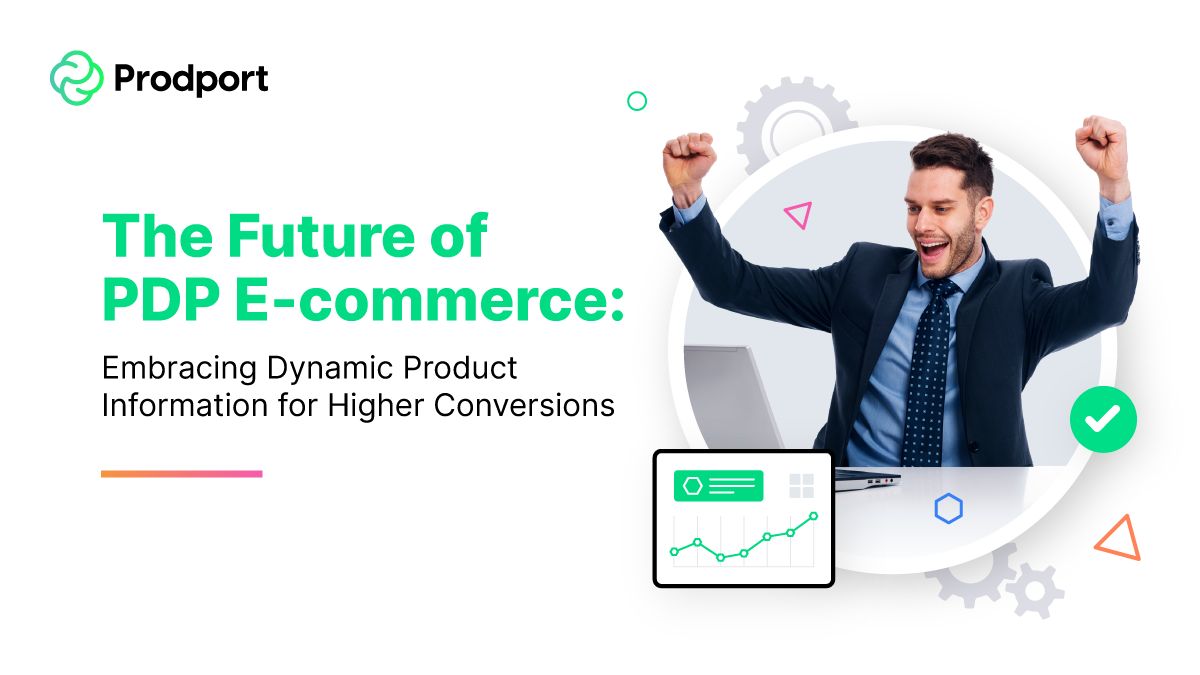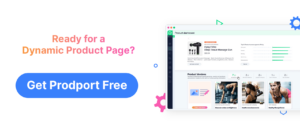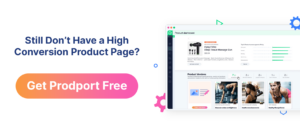While product pages are vital to an online store success, only 18% of top-grossing European and US e-commerce sites have an acceptable or good product page UX. (Baymard)
It’s not all bad news, though. Here’s your chance to stand out!
With dynamic product information, you can join the good ones. And create product detail pages so that your offerings always look their best and hit the target audience.
Read this blog post to find out how to design a product detail page (PDP) and incorporate flexible content so your conversion rates fly high.
What is a Product Detail Page (PDP)?
A product detail page (PDP) is a web page that contains all the product information the buyer needs to know before making a purchase. It’s a virtual storefront covering all product details – color, size, pricing, shipping options, etc.
🛒 The whole point of a product detail page is to make it super easy for potential buyers to find all the info they are looking for in the most user-friendly way. Thus, the buying process will be more accessible, and the product will end up in the cart.
A winning ecommerce combination: PDP + dynamic product information
Product detail pages serve as priceless tools for generating revenue (if designed well). But, a real challenge is to fit all product attributes and all the relevant information onto one page while still creating a user-friendly interface.
Dynamic product information is the key to overcoming this limitation – making product detail pages adaptive and displaying only what customers want to see.
💡 What is dynamic product information? Dynamic product information is an adaptive web page element that dynamically adjusts for every potential buyer in real time. Based on algorithms, machine learning, and user behavior, it matches the best content for the potential buyer from different angles.
For example, you can put a dynamic information section that suggests additional products based on the customer’s browsing history. When you show your customer the product they previously noted again, your chances of getting them to buy it increases.
Benefits of dynamic product information on the product detail page
It’s fair to say that dynamic information on product pages directly influences sales.
It assures potential customers that they make the right choice and the product suits their needs.
Here are some of the most beneficial aspects of adding dynamic information to product pages.
Personalized recommendations
Brands use e-commerce personalization as one of their top retention strategies. Customers expect a personalized experience.
And with dynamic product information, your online shoppers get exactly what they want.
For example, there’s no need to wonder whether to include this or that product in the related section. Artificial intelligence does the whole work for you and personalizes the customer experience on your online store.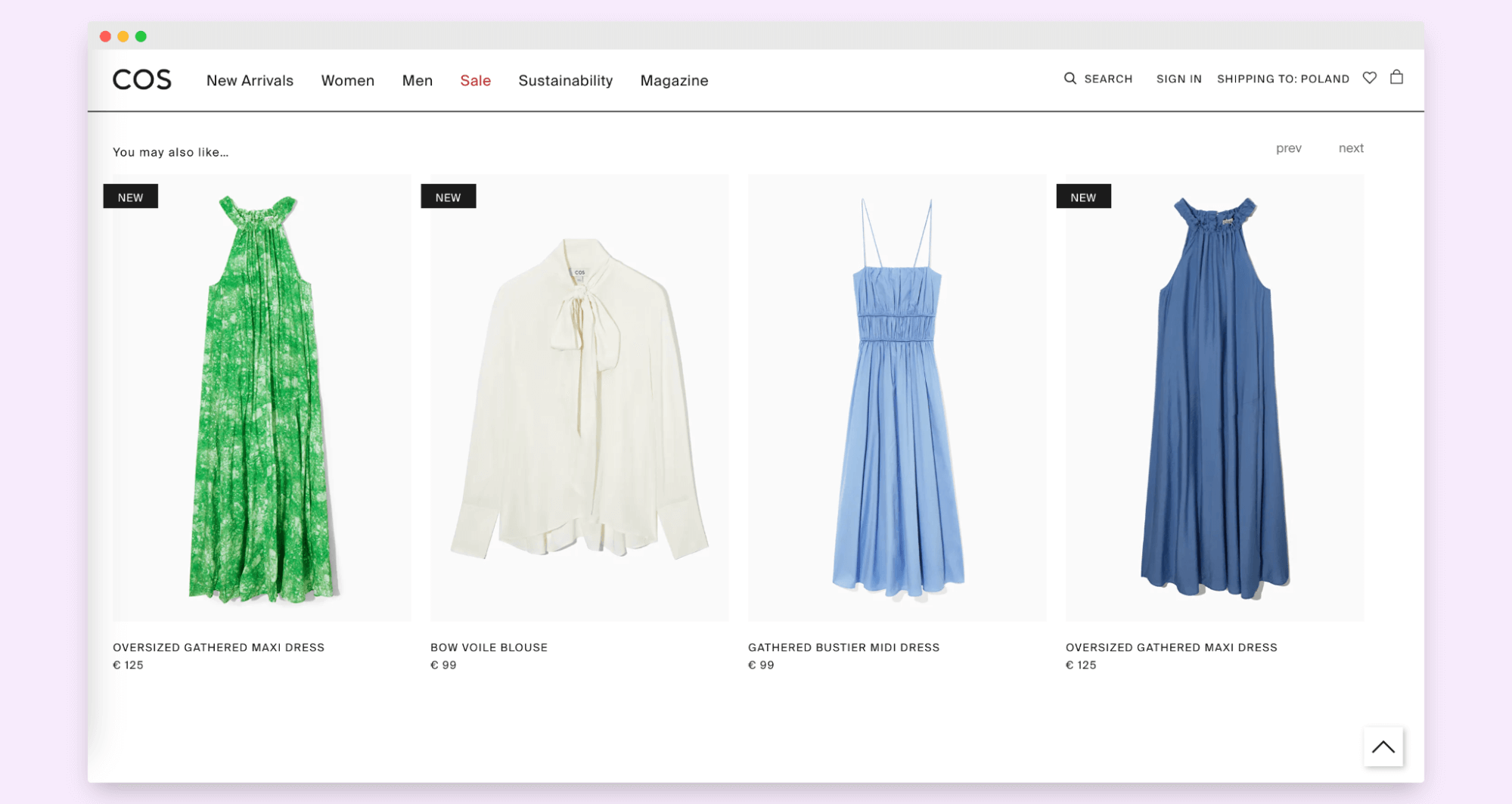
Source: cos.com
Boosted conversion rates
Dynamic product information gives your customer a dreamt product on the plate.
It’s a direct shopping path – they have no doubts about what to do next.
Well-designed product page layout, along with optimized essential elements such as high-quality product images, text, and CTA button – all lead to maximum conversion and a decrease in bounce rate.
Minimized churn rates and returns
Dynamic information has one more superpower. It calms your online shoppers and has a positive effect on customer satisfaction.
Your customers are less likely to be frustrated if they find relevant details on your ecommerce product detail pages without any hassle.
When they can find every product detail before buying it, they know exactly what to expect.
In turn, the number of abandoned carts and returns is minimized. Read our article on abandoned cart email templates to get these people back to your store, though!
🚀 Did you know? Implementing dynamic information on your ecommerce site doesn’t have to take ages. Use Prodport, and tailor a product details page without any coding skills. Best part? You leave one URL to one product. Customize copy, pop-ups, banners, and more – all on a super intuitive interface.
Dynamic core components on the ecommerce product detail page
The layout of your ecommerce product detail pages guide your customers through the buying decision.
The better you optimize them, the better results you’ll get.
How to design a product detail page for an ecommerce store that converts? Where does dynamic information work best? Here’s all you need to know.
1. Product descriptions
Product descriptions and a product title seem to be just text.
But it’s the common misconception – describing the product and its technical specifications is just one part of their function.
Product descriptions should tell your customers why they should invest in your product. They show the product benefits with other relevant information customers should know.
And if you use target keywords for that, they can even help you generate organic traffic from search engines.

Source: gisou.com
How to describe products to persuade customers to buy them?
- Don’t give too much attention to specifications; focus on the benefits the product offers your customers
- Maintain brand integrity by using an accurate tone of voice
- Be minimalistic, use plenty of white space, keep the layout clean, and use relevant keywords
- Respond directly to customer questions, concerns, and desires
The following product description example covers it all.

Source: rhodeskin.com
Tip: With dynamic product information, you can prepare different descriptions for each product detail page, depending on the group of potential customers. It gives your target audience the impression that your product speaks directly to them.
2. Product images and media
The high-quality product image on the product detail page speaks for itself. If your customer can see every product detail – well done!
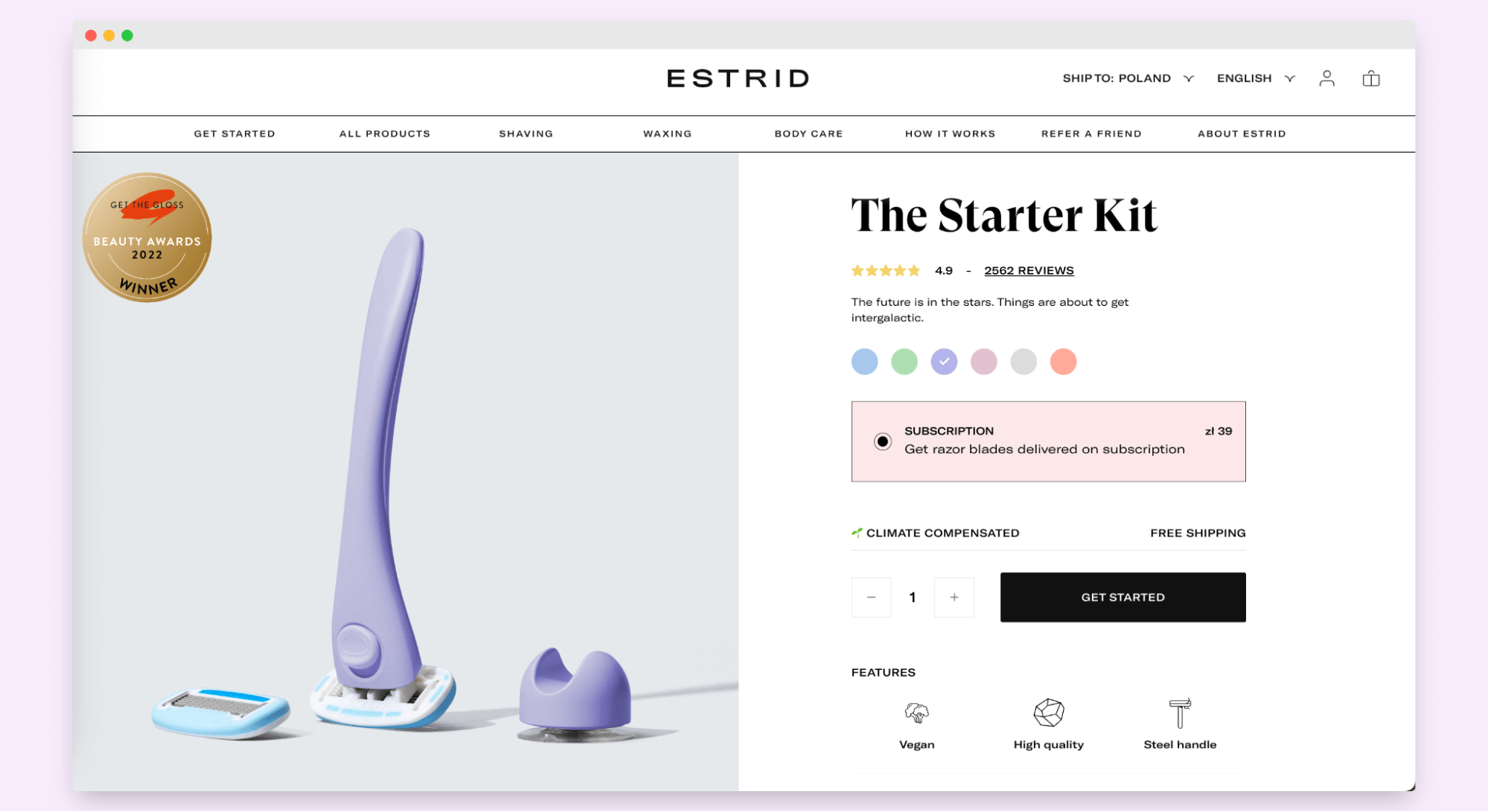
Source: estrid.com
You can, however, enhance the impact of images even further.
- Make this section dynamic and use images generated by influencers and users
- Show your customers the product in real-life surroundings
Such content can make the real magic happen.
It is an effective way to establish solid relationships and increase your brand’s authenticity. And persuade customers that are hesitant to finalize the order.
📸 If you implement the Shopify Prodport plugin, you can create a real-time section on your product detail page showing user-generated content (UGC).
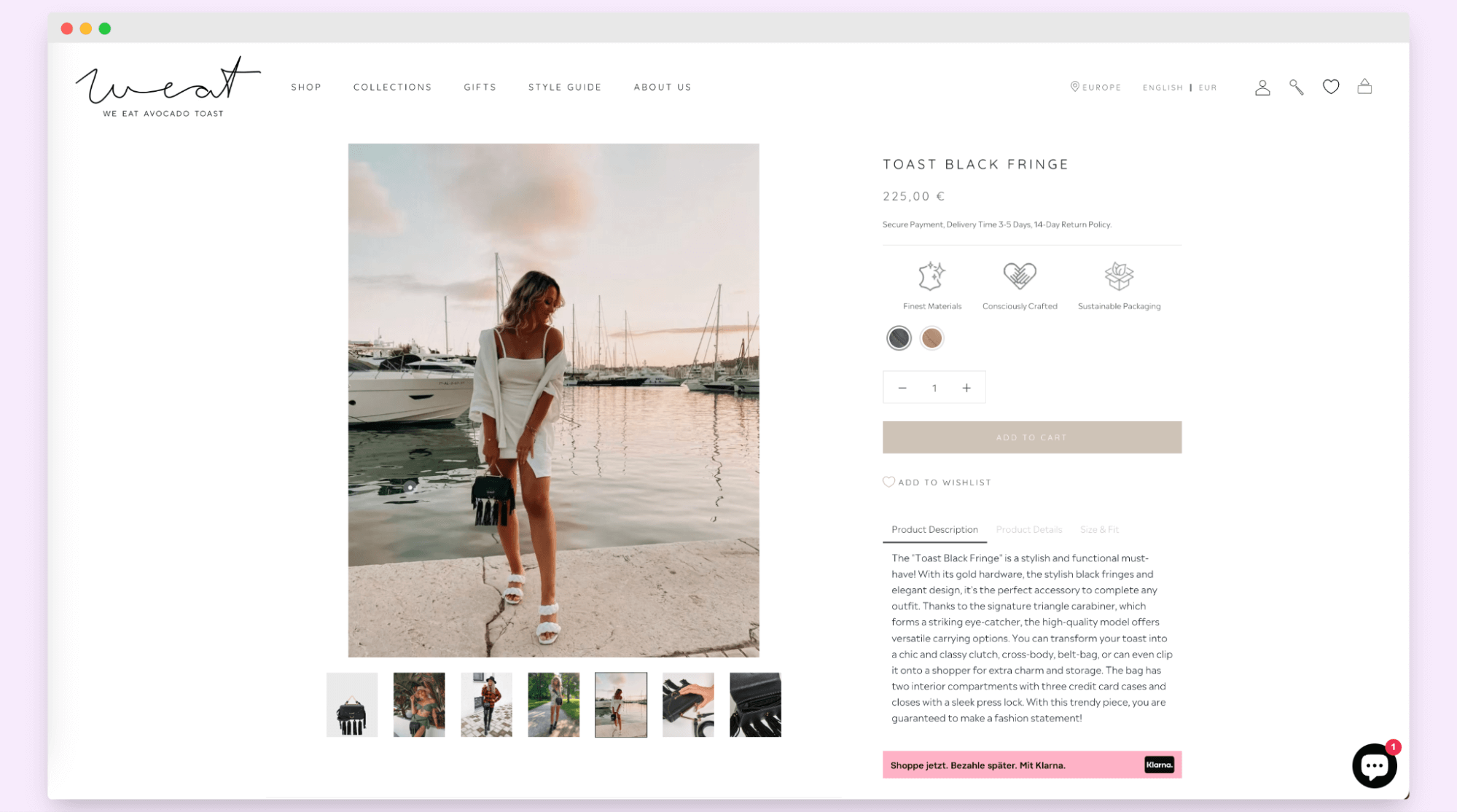
Source: weat-studio.com
➡️ Find out how WEAT achieved a 136% boost in conversion rate with Prodport
3. Pricing and custom discounts
According to Baymard UX research, a lack of clarity in pricing leads to uncertainty. In such a scenario, the potential customer can easily be lost.
To keep your customers on the path to purchase, you must offer a transparent and easy-to-understand pricing structure.
Costs displayed with absolute clarity eliminate any room for doubt. It creates a sense of trust and reliability.
But why stop here?
You can make your customers feel appreciated by offering them custom discounts tailored to their preferences and buying behavior. It’s a powerful way to reward their engagement and keep them coming back for more.
🤑 Automated custom discounts can help you eliminate redundant inventory. For example, you can use limited-time promotions, such as a 20% discount, when spending $150 on pants. Similarly, you can create custom promotional pop-ups triggered based on specific behavior, e.g., when site visitors leave your ecommerce website.
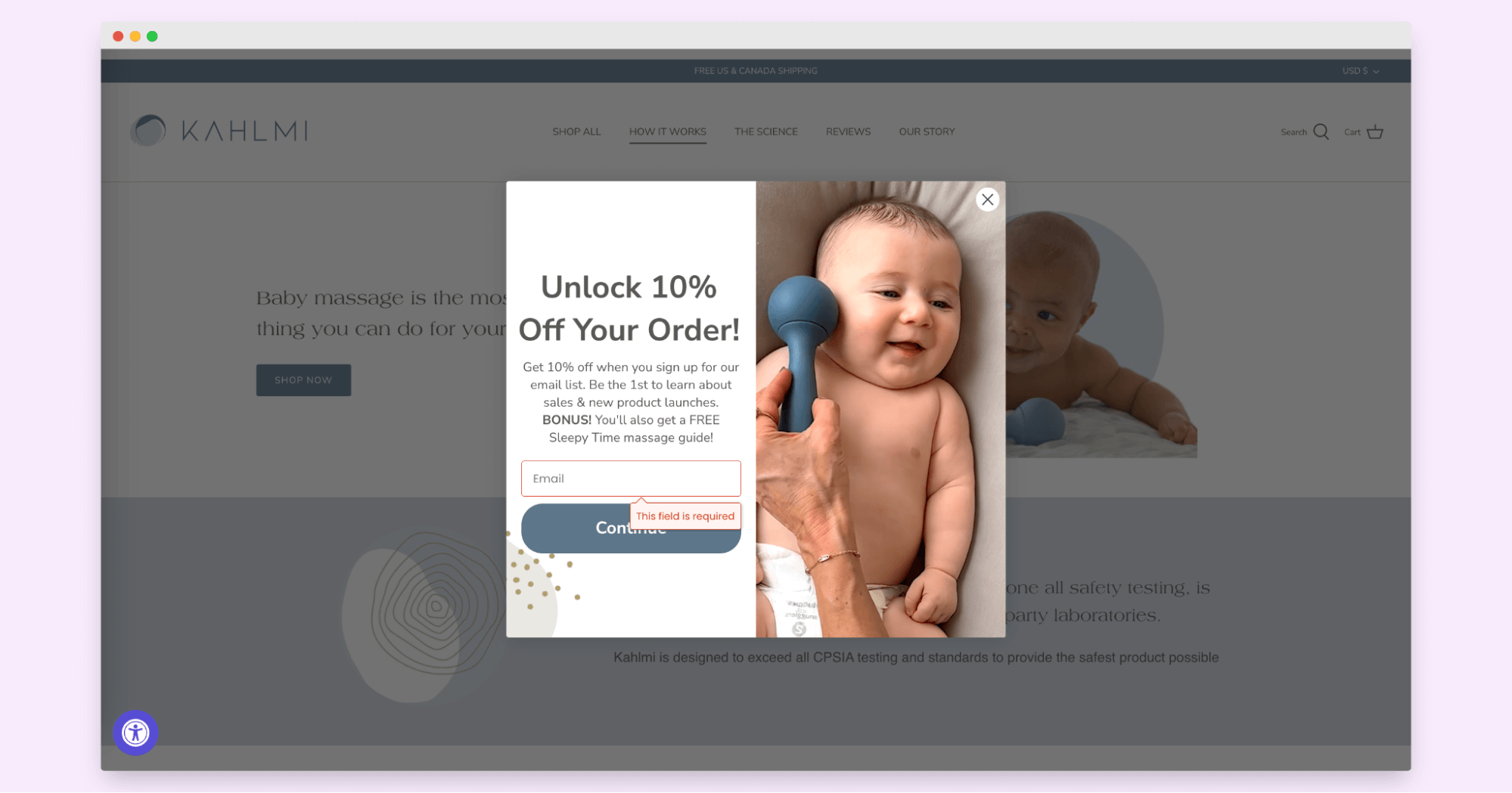
Source: kahlmi.com
Tip: Add shipping information or any unexpected shipping costs below the pricing on your product detail page. Your customers will appreciate knowing the total cost of their purchase without any surprises during checkout.
4. Personalized recommendations
People don’t want to think on their own. They want to receive personalized offers, so they can find products that meet their needs and tastes with no effort on their side.
Even more surprising is that they don’t mind that companies use their data for that purpose.
“Customers want companies to use the large amount of data they possess to provide truly personalized experiences that go beyond typical marketing efforts.” (Zendesk)
But how to do that?
Here are the most common areas with dynamic, personalized content that help you increase your online shopping experience.
- “Top picks for you” – top products personalized for each customer based on their previous interactions and preferences
- Related products – a selection of products that are related or complementary to the one the customer is currently viewing, e.g., based on their browsing history or purchase behavior
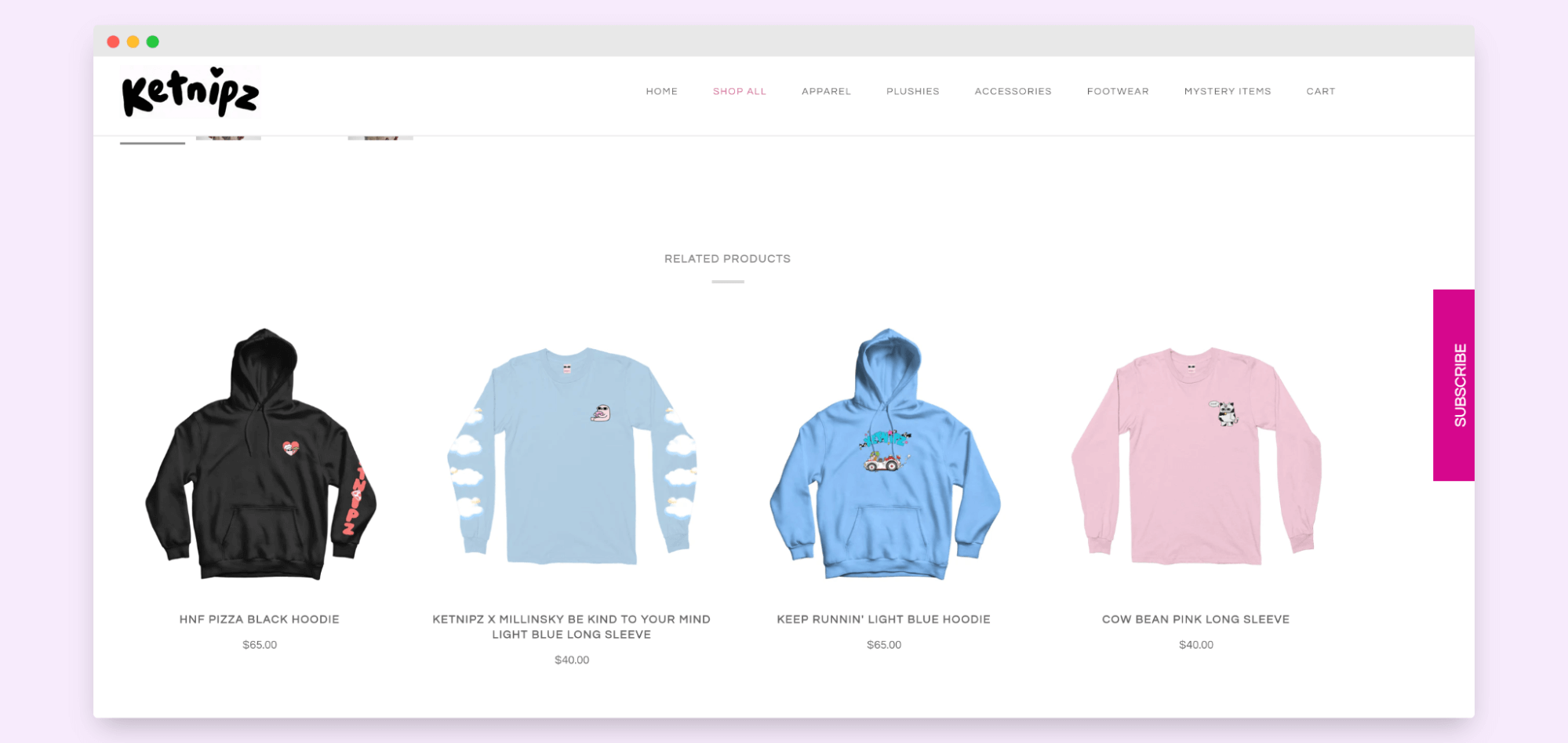
Source: ketnipz.com
- Customers also bought – products that other customers have purchased; give valuable insights into popular combinations
- Similar products – alternatives from the same product category which may fit customer preferences or the same product in several variations
- Cross-selling opportunities – complementary items that encourage customers to buy more

Source: hay.dk
Tip: Prodport helps you personalize your product detail pages for particular users and according to the user destination – e.g., to email campaigns or Facebook ads on mobile devices. That way, the product detail page can use its full design potential and be displayed according to the channel specifications. Check this out for free.
5. Product reviews and social proof
There is one more trick to generate sales on ecommerce site sales. Show reviews on your product page.
Social proof captures the essence – key features of your offerings from the perspective of those who have been down the path before.
💡 Having customer opinions next to the product listing page reduces return rates and sets customer standards. (Shopify Commerce Trends 2023)
Your potential customers rely on those comments. They’ll know what to expect when the postal service arrives with their package. Thus, customer satisfaction increases.

Source: rothys.com
Tip: Do not limit this section of your product detail page to only positive reviews. Include customer complaints as well. Doing so will assure your customers that you are honest with them and won’t hide anything.
How to improve your ecommerce product pages and optimize conversion rate?
When optimizing ecommerce product pages for a higher conversion rate, it’s essential to approach the process systematically and with a specific strategy in mind.
While you may be eager to make radical changes all at once, this is not always the most effective idea.
Instead, it’s better to implement improvements step by step – to maximize results and deliver a seamless user experience.
Here are some valuable tips to consider when improving your ecommerce product detail page.
Understand your customers with behavioral analytics and feedback
Keep a keen eye on user behavior and actively collect customer feedback. This can give you more than you think it could – an invaluable insight into the changing trends, tastes, and preferences of your customers. Your ecommerce site will perform better if you are aware of these shifts and adjust it accordingly.
Examples:
- Implement heatmap tools like Crazy Egg or Hotjar to visualize where users click, scroll or hover the most
- Run regular surveys or feedback forms through tools like SurveyMonkey to gather direct customer insights
- Analyze trends and patterns in sales, cart abandonment rates, and product page engagement using Google Analytics
Prioritize page load speed
An optimized, fast-loading page can drastically improve user experience, resulting in lower bounce rates and higher conversion rates. To achieve this, consider compressing your images and minimizing unnecessary code, which will make your pages load faster.
Examples:
- Use tools like TinyPNG to compress images without sacrificing their quality
- Leverage code minifying tools such as JSCompress and CSSNano to reduce the size of your JavaScript and CSS files
- Perform regular site speed tests using Google’s PageSpeed Insights to identify bottlenecks and opportunities for optimization
Enrich the user experience with product videos and customer testimonials
Customers love getting a more comprehensive feel of the products they’re interested in. Well, who wouldn’t? Your digital assets provide deeper product information and can help build brand confidence – you need that to sell more, and to build a loyal following.
Examples:
- Include product demonstration videos directly on the product detail page
- Showcase customer testimonials via a dedicated section on your page or using a widget like Trustpilot
- Use social proof by displaying user-generated content like customer photos or reviews shared on social media (Prodport can help you here!)
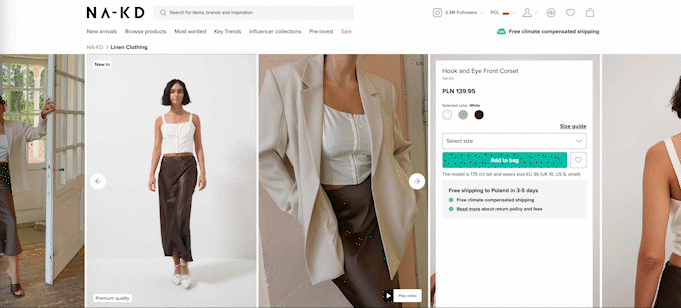
Personalize product details with dynamic Information based on user behavior
User-specific product detail pages can create a more engaging and personalized shopping experience. Using dynamic product information can help you adapt your marketing strategy to different segments of the market.
Examples:
- Display recently viewed products or personalized product recommendations using tools like Prodport
- Adapt language, prices, and offers based on the user’s location or previous purchase history
- Test different elements of your product detail page to see which versions engage users more effectively
Do you want to maintain your ecommerce product detail page in good shape? You can conduct A/B testing and test product page content for anonymous traffic.
Craft compelling calls to action
Your call-to-action (CTA) buttons are crucial points of interaction on your e-commerce product detail page. When you use compelling language and make your CTAs stand out, your users are more likely to complete desired actions, like adding products to the cart.
Examples:
- Experiment with different CTA button colors, shapes, or sizes to see what grabs user attention the most
- Employ persuasive, action-oriented language like “Add to Cart – Get Yours Now!” or “Sign Up and Save 20%”.
- Position your CTAs strategically on the page, such as near the product image or the price, to draw maximum attention
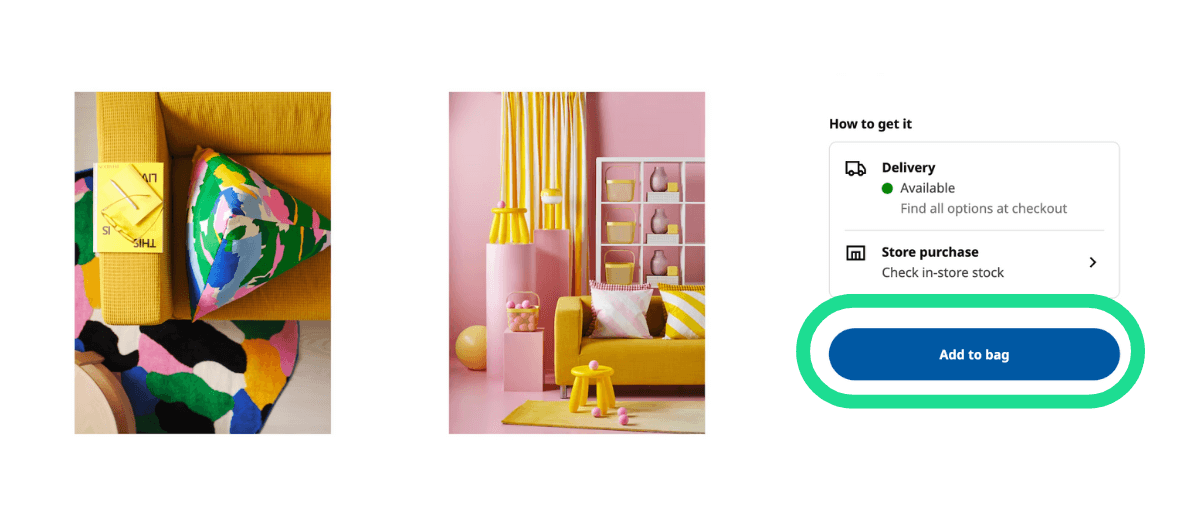
Source: ikea.com
Leverage high-quality images
A picture is worth a thousand words – especially when it comes to e-commerce. High-quality, clear, and detailed product images can make a considerable difference in convincing your customers to make a purchase.
Examples:
- Use a 360-degree view feature to offer a comprehensive visual presentation of your products
- Add an image zoom function, letting customers see product details up close – especially mobile users
- Showcase the product in use or in context to give a realistic view of product attributes and what to expect
Streamline the user journey
The ease of navigation on your ecommerce product detail page can significantly affect the user experience. Keeping the design intuitive and user-friendly, you can MASSIVELY help users. They can find essential information easily, reducing friction in their journey. It all potentially lead to increased conversions.
Examples:
- Use sticky navigation bars or breadcrumbs to help users understand where they are on your site
- Clearly categorize product information under relevant headers or tabs
- Highlight the search bar and make it easily accessible to aid users in quickly finding what they’re looking for
Implement Live Chat
Live chat support is a real-time assistance to your ecommerce customers on product detail pages. And you will definitely satisfy your customers if you’re always available to answer questions and solve their problems!
Examples:
- Use live chat software like Zendesk
- Configure automated chatbot responses for common queries to provide 24/7 support
- Place the live chat option in a noticeable yet non-obtrusive spot on your product page
Optimize for the mobile shopping experience
A growing number of customers shop via their mobile devices – so mobile-friendly product detail pages are essential for your e-commerce store. Optimize for a seamless mobile shopping experience to reach out to a wider customer base and stay competitive.
Examples:
- Use Google Mobile-Friendly Test to assess your page mobile compatibility
- Implement a responsive design that adapts to different screen sizes and orientations
- Make sure clickable elements like buttons and links are easily accessible
Test, tweak, and let your product detail page convert
Armed with this knowledge, it’s time to roll up your sleeves and let your product detail page get to work.
A properly optimized ecommerce product detail page with dynamic information can be a real boost to your business development.
Use the power of Prodport to create personalized shopping experiences that resonate with your customers and drive higher conversion rates.
